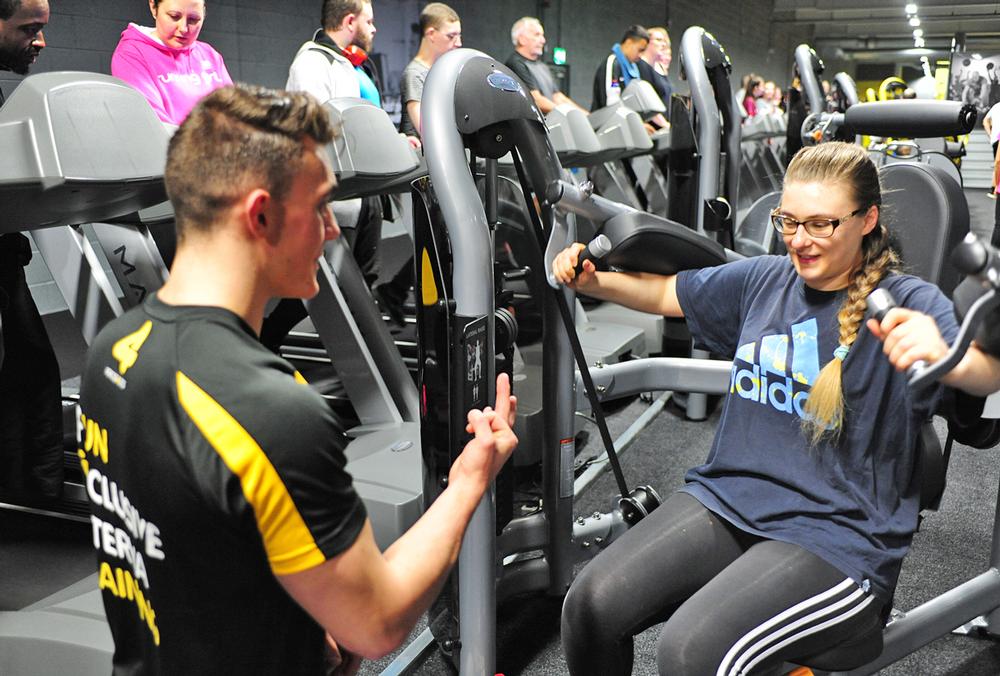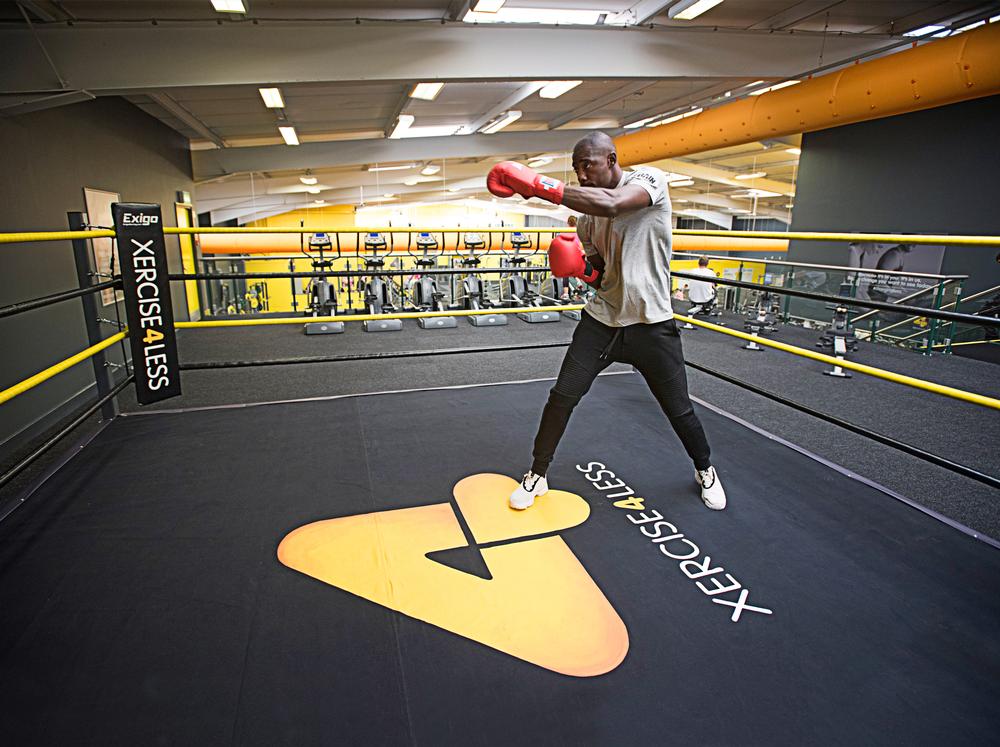Peter Wright, the recently appointed CEO of low-cost gym operator Xercise4Less, is clearly relishing the challenge ahead. “I’m not one for holding the reins of an established business and simply tweaking,” he explains. “I’m better when there’s a clearly defined outcome and some work to do to achieve it. I like getting stuck in and building a business.
“Xercise4Less fits well with my skillsets,” he continues. “It’s less structured than some of its larger rivals in the low-cost sector and has the largest opportunity for growth, particularly in the south of the UK. And growth is the ultimate brief: our target is to double the estate to 100 clubs by the end of 2021, with £42m of funding secured to deliver this.
“I’m confident we can achieve this,” says Wright, “The key is rebuilding and opening up relationships with landlords and becoming credible again. We’ve only opened four clubs this year, and about the same last year, so to a degree the tap’s been turned off. We have to change the narrative around what Xercise4Less is going to do – to explain that we’re looking to aggressively expand – to build confidence in the market and secure a strong pipeline, even against competitors who have better covenants than us.
“We also need to get the business itself thinking differently,” he explains, “So the team understands how it feels to be a faster-moving, higher-growth business and what that looks like in terms of planning, site analysis, the feasibility process, the legal process, how leases work and how you manage relationships with landlords, to be able to do deals faster.
“We have to be flexible around the type of space we’re willing to occupy too,” he says. “If we want to unlock the south of the country, we have to be flexible on pricing, otherwise the rents will be prohibitive. We’ve re-done our feasibility model and are completely open to the fact that membership prices have to reflect the rent and the area.”
Building the team
Wright feels a lot must change if the business is to achieve its growth targets, saying: “Having joined the business last July, one of the first areas we got stuck into was the team – looking at the structure of senior management.
“Our first new recruit was a CFO, Helen Gauden, who joined from retailer Wilko in September; we attracted a lot of high-quality candidates, primarily because there was a growth story with funding behind it. Helen will be instrumental in building a robust infrastructure covering compliance, governance and reporting accuracy.
“As it’s grown, the business has also become very inconsistent operationally, so we’ve just appointed Mike Evans – ex-Virgin Active and ex-Goodlife Fitness Australia – as operations director. His brief is to make sure that whichever Xercise4Less club you go into, of whatever age, it looks as it should, and that club managers have ownership and know what they need to work on.
“We’ve appointed a new marketing manager too, Joe Gourvenec, who has a strong digital background. His role is to dramatically improve the experience in our digital marketing channels, so we drive more online sales.
“Xercise4Less has always had a number of USPs, from the size of the clubs to the boxing areas, ladies-only zones and the group exercise timetable, but we’ve never focused enough on promoting them.
“Of course, we sell on price – it’s spelled out in our name after all – but at the moment that’s too front and centre. We want to make a shift, encourage people to look at everything we offer, recognise we’re a good proposition for them… and only then, that we’re also good value.”
Building the infrastructure
Next on Wright’s list of ‘things to do differently’ is the big picture around IT and data. He explains: “We currently lack an architecture that allows us to deliver a member experience from joining to leaving, so we’re planning to build new IT infrastructure.
“If you look at Pure Gym and the Gym Group, two or three years ago both of those companies invested very significantly in rebuilding everything from the web front-end to the data warehouse; you’re talking probably a club’s worth of investment. Pure Gym did it in-house, the Gym Group outsourced it. We’ll be launching a similar project this month.
“This will see us develop a fully-inclusive member journey built around an agile ability to interpret data, with responsive pricing, member profiling, communications with tailored messaging via relevant channels; millennials, for example, aren’t interested in emails.
“It goes back to what we were doing at MACFit in Turkey (see Peter Wright: The story to date, p32): improving retention, even within a low-cost and low-touch environment, by using data. Data is the key to creating a dramatically improved member journey: at MACFit we identified risk profiles, built churn models, analysed correlations between in-club behaviours and retention. In the UK, Pure Gym and the Gym Group are already doing this sort of thing, but very few others.”
Amazon-style aspirations
“We should be an IT business,” says Wright. “We aren’t at the moment, but we should be. I’m very data-focused, very IT centric, and I think there’s an awful lot that can be unlocked in our industry through sensible and clever use of IT. However, the whole sector is in the dark ages at the moment: the quality of apps, for example, is far below where it needs to be.
“We should be looking at Amazon-style AI recommendations and push notifications, Chatbot interactivity, WhatsApp integration… Ask anything on WhatsApp – can I have a new programme, can I cancel Wednesday, when does the class start, when does the club close? – and we’ll give it to you.
“We need to be using apps as entry-level PTs too, so for example, if a new member sets a goal of five workouts a week, the app immediately moves to modify unrealistic expectations, saying something like ‘let’s start you on three’. This is the sort of stuff we were already working on in Turkey because we knew if we didn’t fix retention, we wouldn’t have a business. It’s something I’m now keen to look at for Xercise4Less.
“My feeling is that, in the long-term, we should own this tech. I’m keen to create an app that gives us and our members exactly what we want, rather than a multi-tenanted app that gives everybody some of what they want… and a lot they don’t.”
“This is an area I’m really excited by,” he tells HCM. “The whole IT piece is as wide as your imagination. Just think of Amazon: easy to use, easy even when it goes wrong – although 99 per cent of the time they deliver on their promises at a great price. Wow, if only we could take all that and translate it into health clubs.
“We’re nowhere near this yet though. We have to build the foundations first: the IT infrastructure that will allow us to grow, analyse data, manage members’ journeys more efficiently, and improve retention. This is going to be a huge focus for us in 2019.”
Keeping it simple
Wright says his focus will be on uplifting the business: “We’ll be looking at the professionalism of the company generally. When I joined MACFit, the private equity exit was planned, the number of clubs was planned, the systems, the procedures… everything was structured, right down to what we did every day. That’s the set-up we need to retrofit into the Xercise4Less business, so in two or three years’ time, if you were to lift the bonnet, you’d see it functioning like a Ferrari, with the right systems, the right policies, the right procedures, good governance, good compliance… all the bases covered. We’re not there yet, but we will be.
“In the end, this isn’t a complicated business – it’s just very entrepreneurial and has grown without the right structures and processes in place. My job is to simplify things, uniting the team and shareholders behind key priorities and executing those very well and diligently.”
Wright is planning other changes too: “There are specific initiatives we’re looking at: revitalising our group exercise offering, as the quality of this was impacted by the recent move to make all PTs employed; refurbishing some of our clubs; and reviewing the way we deliver PT, including rolling out small group training and our 4FiiT eight-week transformation camps.
“But mostly it’s about simplification. And if we get that right, I believe we have the biggest growth opportunity in the market. The sector still has huge growth potential too: it’s nowhere near saturation. How can it be with penetration at 12–13 per cent, and a millennial market that goes to the gym rather than the pub on a Friday night?
“Xercise4Less could get to 200 clubs. And in an estate of that size, if you harness data to improve retention – even by just one percentage point – it has a huge financial impact. And that’s what excites me. We know what we need to do. We just have to get on and do it.”































































